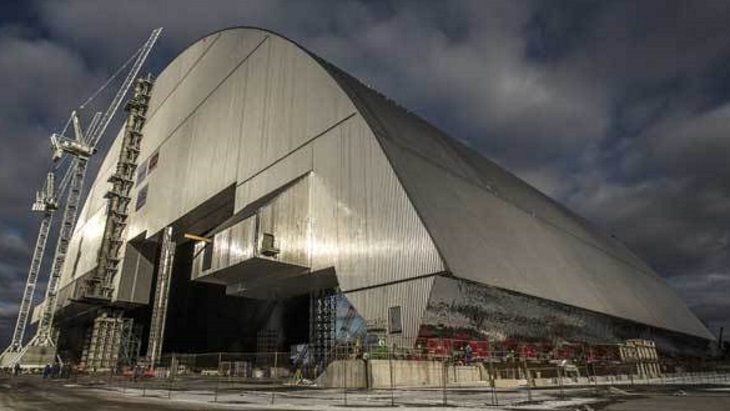The initiative for the establishment of the CSF was led by the G7 governments, the European Commission and Ukraine and was announced at the 1997 G7 summit in Denver. More governments declared their support at subsequent pledging conferences in New York (1997), Berlin (2000), London (2005), Kiev (April 2011) and London (2015).
Simon Evans, head of the CSF since 2009, cited the US Project Management Institute's description of the NSC as "one of the 50 most influential global projects of the last century".
In a statement on 20 October, Evans said: "The superlatives around Chernobyl are well rehearsed. The world's worst nuclear accident, the largest ever international collaboration on nuclear safety, the most contaminated place on the globe, the heaviest land based moveable structure in construction history, and even (at over 2.5 million hits) the bank’s largest ever exposure on social media. But for most people on the project, Chernobyl spoke more in emotions than stark facts. Passion, patience, frustration, exhaustion, stress, laughter, wonderment - and above all a fantastic sense of pride and achievement."
The NSC project engaged more than 6000 people over its construction history and its completion was described by Hans Blix, CSF chairman, as having "healed a scar" that had blighted the region since the accident in April 1986.
Evans said: "The complex decommissioning challenges ahead will take many decades and will require continued dedication, commitment and international collaboration. However, its completion enables Ukraine for the first time since the accident, to look forward to the future in the knowledge that they can deal with the deadly inventory of the destroyed reactor safely and securely."
He added that his work with the CSF had brought about "a mini-epiphany" for someone who was "decidedly agnostic" about nuclear power, to "a fervent believer in the role nuclear energy can and must play in a low-carbon future".
One of Chernobyl's least recognised but most important legacies, he said, was to transform the global nuclear industry from "a somewhat insular, defensive, secretive and arrogant industry to one where transparency, safety, technological excellence, peer review and international collaboration is in its DNA".
The Chernobyl accident was "the catalyst for an international revolution", he said, in the management, oversight and regulation of nuclear power, backed by global conventions such as the Nuclear Safety Convention.
"To condemn the modern nuclear industry because of Chernobyl is no more logical," he said, "than to ban cruise ships because of the Titanic."
Nuclear power is the largest single provider of low-carbon energy in the EBRD’s countries of operation. "It is, of course, not the single solution to a low-carbon future, but almost all of the UN International Panel on Climate Change pathways to achieving climate change objectives contain allowances for increased use of nuclear energy."
The CSF has led to some of the bank's proudest moments, he said, and its "most enduring legacy".





_82983.jpg)
_34792.jpg)
_16403_79272.jpg)


_76087_55556.jpg)



